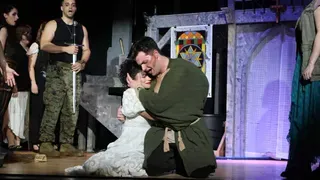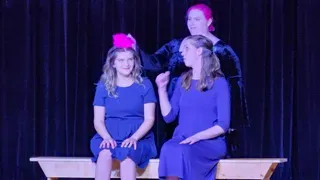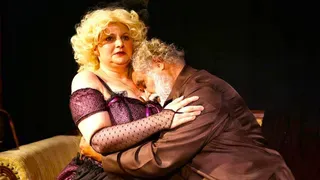October 29, 2015
Flowers
Monique Rubens Krohn READ TIME: 3 MIN.
Floriography, more commonly known as the language of flowers, dates back to the Bible. Sending cryptic messages through the use of particular flowers or of their arrangements can be seen in the court of Constantinople, Shakespeare's works, and beyond.
Although the popularity of floriography waxed and waned throughout the centuries, by the time of Queen Victoria's reign, floral dictionaries were in vogue and Victorians could send each other "talking flowers," known as nosegays or tussie-mussies.
Flowers are used everywhere: To decorate gardens and interiors, at funerals, weddings and other life celebrations and memorials, even by the side of the road. But in truth, what is their meaning? And is that meaning the same from sender to receiver or is it reinterpreted? Does the meaning change with context? Over time? Can flowers change lives?
These and other fascinating questions and ambiguities are explored in Jon Gara�o and Jose Mari Goenaga's hauntingly beautiful latest film "Flowers." ("Loreak") So too are missed connections, memories, grief, loss and love.
Ane (Nagore Aranburu) is trapped in a loveless marriage. Suddenly, out of nowhere, she begins to receive beautiful bouquets of flowers every Thursday. Their sender is anonymous, but the flowers boost her faltering sense of self. The weekly delivery of flowers creates even more tension between Ane and her puzzled and jealous husband, Ander (Egoitz Lasa).
At the same time, another couple, Be�at (Josean Bengoetxea) and Lourdes (Itziar Itu�o) struggle with their marriage and Be�at's overbearing mother, Tere, who disapproves of Lourdes. Wonderfully and subtly played by Itziar Aizpuru, Tere only wants a grandchild.
This seemingly unconnected group is thrown into turbulence when a sudden, tragic car accident jolts everyone into a new reality. The flowers stop, only to reappear again in a different context, this time by the side of the road at the site of the accident.
"A person only dies when they are forgotten," Tere tartly tells Be�at when she goes to put flowers on her husband's grave, as a way of guilting her son who refuses to accompany her to the grave site. So are the mysterious flowers by the gravesite a way for someone to ensure that the dead person is remembered? Or are they to let the passerbys know that something terrible happened there?
Some characters leave flowers to remember; others refuse categorically to do so, preferring to forget. But nature and grief have their own course and often can exact the payment of new perspectives.
All this is brought home by the exquisite cinematography of Javier Agirre, aided by the able film editing of Raul Lopez. Many scenes of interiors are washed by soft sunlight pouring in, while others are always framed with odd angles of props.
Close-ups of Tere's face reveal her many wrinkles that with those visuals speak to the viewer of the many burdens she has had to bear. And of course, always there are the magnificent shots of flowers; redolent, lush and bursting with color and beauty until they die, withered, dry and crumpled.
The film's language is Euskara, which may sound odd and unfamiliar to many viewers. It is the language of the Basque region of Spain and is that country's first ever Basque language nomination for the 2016 Oscar's Best Foreign Language Film category. "Flowers" should be a top contender.
Monique Rubens Krohn is a freelance writer living in New Jersey







